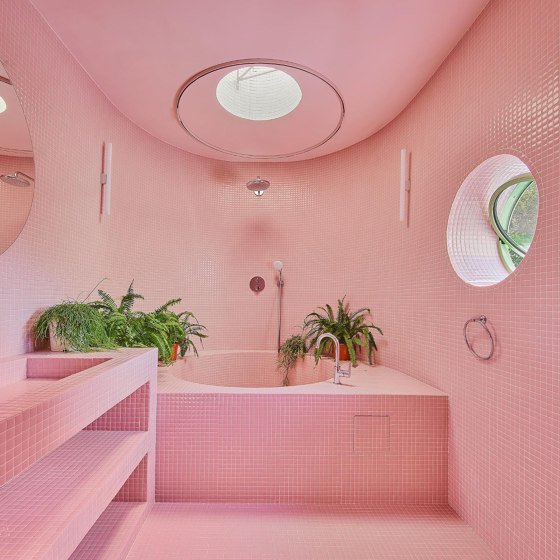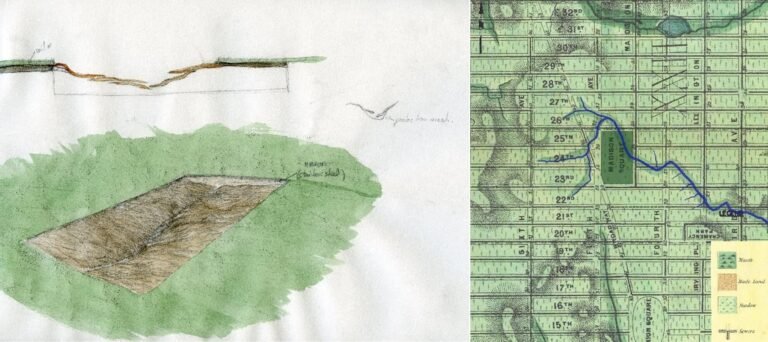Fuyang · Yangbei Lake Wetland Ecological Lodge / Shulin Architectural Design
Fuyang · Yangbei Lake Wetland Ecological Hotel / Shulin Architectural Design


Text description provided by the architects. Since ancient times, Fuyang has been a treasured land sit by the Fuchun River. The restored Yangbei Lake Wetland is divided into a larger part and a smaller part in a long strip which two parts are connected by a wooden arch bridge and surrounded by a large area of water and vegetation, featuring a unique landscape and good privacy, which makes it great choice for scattered small guesthouses. The seven small houses, led by pebble plates, are distributed at appropriate intervals along the edge of the small island to be as close to the waterfront as possible, so that each has a spectacular view with appropriate distance. The island is connected by a bridge, but guests can also take boats for a different experience.


Befriend with nature, Build pleasant home
The Wetland Eco Hotel is composed of two types of rooms that are randomly distributed, both creating the feeling of living under a large roof, which also looks like wings of a bird, who settles here, lingers on the island for a while and lands on the water. The ancients like to make objects to adapt to local conditions, lightly intervene in nature and use wood to frame the house on the water, so that the house can be integrated and wrapped by nature. This ecological concept has always been in the bones of Chinese. These two kinds of houses, as many would say, contains a Jiangnan style, which I think, in part lies in the virtual space properties. For one thing, they magnify the proportion of the space under the eaves, connecting the living space and nature. For the other, they create a pleasant living space through the scale to embody the relationship among people, the space and nature.



Besides, the Jiangnan style is also expressed by connecting the formation of the houses with the hills surrounding the wetland. The slope of the house’s folded roof is kept similar to the contour of the mountain so that the houses and distant mountains can be seen through the nearby reeds. From this angle, the houses seem to echo the mountain, greeting each other and responding to each other from a distance.

Design Concept
The indoor layouts of the two rooms are not the same. One has a very compact space indoor and a very large terrace outdoor. The indoor space meets the basic needs for living while most of the time, the outdoor space provides a chance to enjoy the beautiful lake and mountains and feel the nature. In terms of morphological relationship, two large triangular double-slope roofs cover the entire room, which is tilted at one end. The transparent glass façade is combined with the large roof, limiting the viewing range and the direction. The indoor space is divided into sleeping area and leisure area by the bathroom in the middle in a symmetrical way. In the middle, the bathroom is designed to be lower than the roof, so that the ceiling is a consistent space. A relaxing tea drinking area and an outdoor bathing bathtub are set on the large terrace, and frameless glass panels are designed next to the water to reduce shields of the view.



Another design concept of the room is to frame three small boxes into a large roof, each with a different size and height for different functions. The boxes are separated from the roof and simply places on the frame to create a sense of lightweight, while the air can pass under the double-layered roof, which also effectively avoids the high indoor temperature in summer and saves energy. Two terraces connect the box to the frame to form a complete space for use. Nearly half of the guest rooms are semi-outdoor spaces, emphasizing the importance of semi-outdoor experience in a natural environment.



In terms of facades, the living room is equipped with a corner floor-to-ceiling window that can be completely opened. If all the windows are opened, the house would provide a complete view of the lake, aquatic plants and the terrace. The room can be comfortable when the opened entrance door makes the wind passing through. The bedroom is set up two-step-high from the ground, with an interesting triangular window on the rood, through which the wooden structure above and the sky can be seen. The toilet is connected to the bedroom on the back, in which a large bathtub is set in front of floor-to-ceiling doors and windows that can be fully opened. Guest would feel like enjoying a bath outdoors. There is a terrace outside the bathroom for resting after the bath.

Clear construction, real building
Most components are assembled on-site from prefabricated manufacturers. We mainly chose steel structure, which are assembled and welded on-site. Solid wood is used on the roof beam, the wall is supported by light steel keel, while the outer surface is combined with relatively standard plate and glass doors and windows made in factories and put together on-site. 80% of our materials are prefabricated, so through good cooperation on construction, the project can be completed rapidly and accurately, effectively reducing the damage to the environment and noises. The steel structures are used in different ways in the two houses. In the smaller type, steel structures and spatial facade are exposed in an obviously way, while the glass door and window fill in the middle of the structure, forming an integral relationship.
The large type is completely separated by the structure of the roof frame system and the indoor box. The roof system is clearly visible, including steel-wood segments, the connection between wooden components and the overhead steel structural rods at the bottom. In addition, the inner structure of the box is wrapped, so that the space logic is expressed very clearly, and the beauty of the building is also displayed through it.








